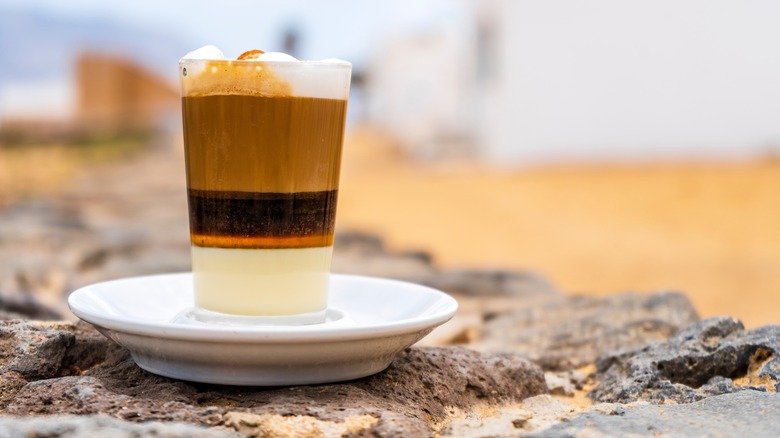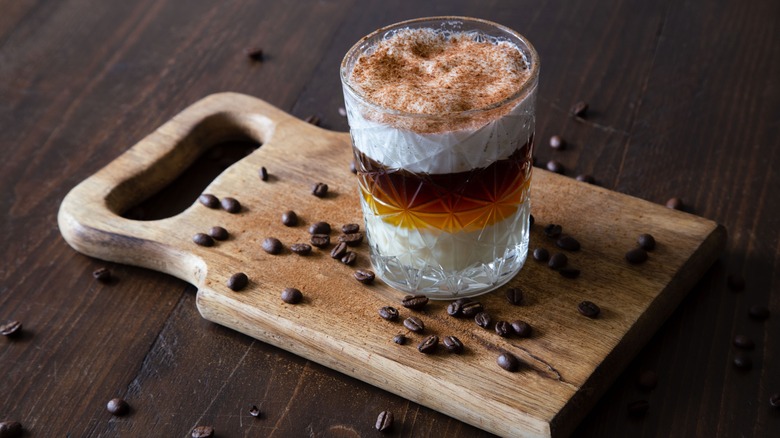Looking For A Layered Coffee Cocktail? Try The Barraquito
Although often consumed at opposite parts of the day, coffee and alcohol deliver delicious crossover. Ideal as an afternoon pick-me-up or an energizer to keep the night going, it's no surprise drinks like the espresso martini, a strong Irish coffee, and coffee Negroni have become modern-day classics.
In the Spanish-governed Canary Islands, a traditional boozy coffee favorite is the barraquito. Prepared with espresso, whole milk, Licor 43, condensed milk, plus cinnamon and citrus zest, the sling's complex, aromatic combination of ingredients. It's served hot in a stunning arrangement of suspended layers. Typically, the condensed milk goes on the bottom, followed by a shot of liqueur, then espresso, frothed milk, and a cinnamon garnish, yielding a multi-colored, latte-like creation. The lemon peel is placed on top, then the drinker plunges it through the glass, mixing all the components before enjoyment.
The result's a beautiful medley of flavors, with sweetness, spice, a touch of booze, and coffee's robustness. Plus, it's relatively low alcohol since the Licor 43 isn't a full-proof spirit, comprising 31% ABV. While a perfect way to kick in a midday buzz, the concoction can also be enjoyed alcohol-free on the islands.
The barraquito is the creamy and spiced caffeinating cocktail from the Canary Islands
Although now enjoyed throughout all eight islands of the archipelago, the barraquito's origins point towards Tenerife, the largest land mass. Reportedly, the creation was first made for Bar Imperial regular Sebastián Barraco Rubio, who'd order the coffee, liqueur, and aromatics separately. An enterprising bartender then layered the flavors together, naming it the barraquito as a nickname for his client.
The sling's Licor 43 foundation is unsurprising given the liqueur is also paired with espresso in a Carajillo, a beloved Latin American favorite. This boozy base is Spain's most beloved liqueur, a vanilla-forward sweet and spicy creation that pairs perfectly with the barraquito's flavor palate. As a result, the liqueur's a dependable component, sometimes modified by infusing with more citrus peel and spice for flavor.
Instead, the different versions that exist in the archipelago experiment with small touches. Some incorporate whipped cream, while others switch the garnish to cacao. Spirit-free versions are popular, too, lending the drink a more energy-restoring quality after a large meal. Regardless of the rendition, barraquitos are enjoyed like desserts during sobremesa, an after-lunch relaxation time that's intertwined with the drink.

